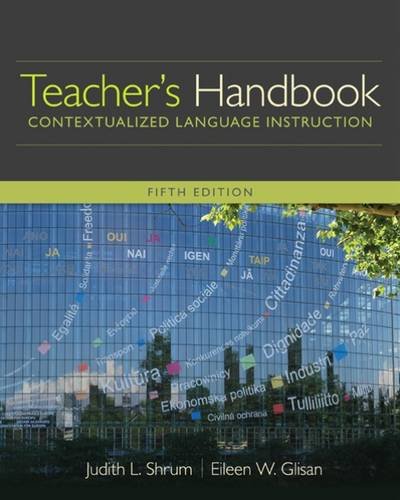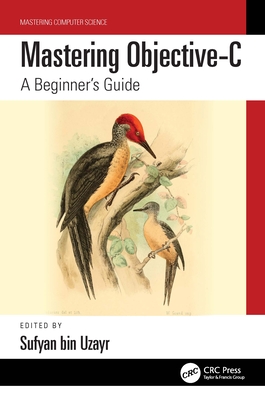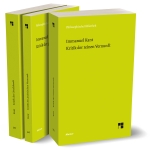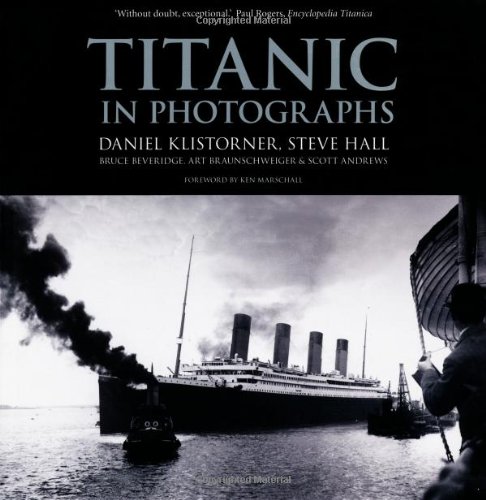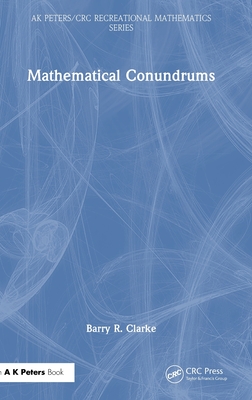图书简介
TEACHER’S HANDBOOK: CONTEXTUALIZED LANGUAGE INSTRUCTION, 5th Edition, is designed for courses that prepare teachers for pre-K through college/university levels. Although its focus is for beginning teachers, it also serves accomplished teachers seeking to update their knowledge of SLA research and acquire new pedagogical strategies. It is ideal for teaching assistants and graduate student instructors who are teaching lower-division language courses and are required to take a methods course, as well as for education majors or students pursuing a teaching credential. The authors present a concise theoretical review followed by provocative case studies that illustrate contextualized methods for teaching ESL and foreign language for proficiency. Extensive appendices and a text-specific website with links to teacher resources and streaming video of standards-based instruction make it easy for your students to apply the concepts to their teaching.
馆藏图书馆
Yale University Library
Acknowledgments.
Preface.
ACTFL/CAEP Standards; TESOL Professional Teaching Standards; TESOL Technology Standards.
Preliminary: Becoming Familiar with the Profession and Expectations for Language Teachers.
Architecture of the Profession.
Expectations for Language Teachers: A Continuum of Teacher Standards.
Language Policy and Language Education Policy.
Investigate and Reflect.
Learning About Your National, Regional, and State Professional Organizations.
Familiarizing Yourself With Foreign Language Resources.
Comparing Teacher Standards Across the Career Continuum.
Becoming Informed About Language Policy and Language Education Policy.
1. UNDERSTANDING LANGUAGE LEARNING THROUGH SECOND LANGUAGE ACQUISITION THEORY AND RESEARCH.
Conceptual Orientation. Language Learning as an Individual (Cognitive) Achievement. Language Learning as a Collaborative (Social) Achievement. The Role of Affect and Motivation. Implications of the Research for Classroom Teaching. Observe and Reflect.
Observing a Child Interacting in His/Her Native Language (L1). Observing a Beginning Language (L2) Class. Discuss and Reflect. Creating Real Conversational Models.
2. CONTEXTUALIZING LANGUAGE INSTRUCTION TO ADDRESS GOALS OF THE STANDARDS FOR LEARNING LANGUAGES.
Conceptual Orientation. A Historical View of Context in Foreign Language Instruction.
Contextualized Interaction Through Proficiency-Oriented Instruction. An Introduction to the World-Readiness Standards for Learning Languages (W-RSFLL). Focus on Context: The \"Weave\" of Curricular Elements. Pre K–12 English Language Proficiency Standards. Using the Standards Framework to \"Contextualize\" the Curriculum.
Teach and Reflect. Integrating Professional Tools into Teaching. Contextualizing Past Tense Narration. Using the Standards at the Post-Secondary Level. Discuss and Reflect.
Teachers Talking Textbooks.
3. PLANNING STANDARDS-BASED INSTRUCTION USING BACKWARD DESIGN.
Conceptual Orientation. Current Paradigm for Instructional Planning. Planning for Student Learning and the Development of Thinking Skills. Considerations in Providing TL Input and Selecting Content. Making Connections: Integrating Language and Content Learning. Long-Term Planning for Instruction. Daily Lesson Planning. Teach and Reflect. Planning for Instruction. Developing a Content-Based Level 5 Foreign Language Class. Comparing State Framework and Curriculum Documents. Exploring Options for CBI at the Post-Secondary Level. Discuss and Reflect. Analyzing the Use of Content and Context in a Japanese Lesson.
4. CONNECTING LANGUAGE LEARNING TO THE ELEMENTARY SCHOOL CURRICULUM.
Conceptual Orientation. An Optimal Age for Language Acquisition? The Elementary School Learner. Program Models. Using Lessons Learned in the Past to Design Early Language Programs of the Present and Future. Strategies for Teaching Language to Elementary School Learners. Standards Highlight: Making Connections Between Language and the Elementary School Curriculum. Teach and Reflect. Designing a Content-Based Elementary School Lesson. Developing a Storytelling Lesson. Discuss and Reflect. Teaching Fourth-Grade Content in French.
5. INTEGRATING CULTURES AND COMPARISONS IN MIDDLE LEVEL EDUCATION AND BEYOND.
Conceptual Orientation. The Middle Level Learner. Middle Level Language Instruction.
Principles for Middle Level Language Instruction. Standards Highlight: Integrating Cultures and Comparisons into Middle Level Language Instruction. Assessment of Middle Level Performance. Teach and Reflect. Developing Culture-Specific Examples of the Three Ps. Unit and Lesson Design Around a Story, Myth, or Folktale. Viewing and Analyzing Lessons on the Three Ps. Discuss and Reflect. It’s McLicious! Staying in the Target Language.
6. USING AN INTERACTIVE APPROACH TO DEVELOP INTERPRETIVE COMMUNICATION.
Conceptual Orientation. Framework of Communicative Modes.
Standards Highlight: Exploring the Interpretive Mode Through Listening, Reading, Viewing. Interpretive Communication: Listening and Reading Processes. The Viewing Process. Variables Involved in Comprehension and Interpretation: Research And Implications. Integration of Authentic Texts. The Role of the Interpretive Mode Across Instructional Levels. An Interactive Model for Developing Interpretive Communication.
Teach and Reflect. Using the Interactive Model to Explore an Authentic Printed Text.
Using the Interactive Model to Explore an Authentic Audio/Video Segment. Teaching Literature at the Post-Secondary Level. Discuss and Reflect. Reading Aloud.
7. A STORY-BASED APPROACH FOR DIALOGIC INQUIRY ABOUT FORM AND MEANING.
Conceptual Orientation. The Deductive and Inductive Dichotomy. Reconceptualizing Grammar Instruction. Basic Principles of Dialogic Story-Based Language Teaching: Research and Rationale. PACE: A Story-Based Approach for Dialogic. Inquiry about Form and Meaning. Elements of Story-Based Approach: Summary. Teach and Reflect.
Examining Grammar Presentations in Textbooks. Designing a Story-Based PACE Lesson.
Developing a PACE Lesson for the Post-Secondary Level. Discuss and Reflect. Contrasting Explanations of Form.
8. DEVELOPING ORAL AND WRITTEN INTERPERSONAL COMMUNICATION.
Conceptual Orientation. Interpersonal Speaking from a Proficiency Perspective.
Standards Highlight: Exploring the Interpersonal Mode Through Speaking and Writing.
Strategies for Teaching Interpersonal Speaking. Teacher Interaction with Students.
Teaching Strategies for Group Interaction. Student Interaction. Developing Interpersonal Speaking Through Study of Literature and Culture. Teaching Interpersonal Writing. Providing Feedback in Oral Interpersonal Contexts. Teach and Reflect. Creating Information-Gap Activities for Various Levels of Instruction.
Integrating Speaking Tasks with Oral or Printed Texts. Integrating Advanced-Level Discourse at the Post-Secondary Level. Discuss and Reflect. \"Survivor\" Game: Keeping Students in the Target Language.
9. DEVELOPING ORAL AND WRITTEN PRESENTATIONAL COMMUNICATION.
Conceptual Orientation. Standards Highlight: Exploring the Presentational Mode Through Speaking and Writing. The Nature of Oral and Written Presentational Communication. Presentational Communication: L1 vs. L2. Research on Teaching Presentational Writing. Teaching Presentational Writing and Speaking as a Process.
Presentational Writing and Speaking as Product: ACTFL Proficiency Guidelines --Writing. Formats for Presentational Communication in the Classroom. Feedback on Presentational Writing. Responding to Oral and Multimedia Presentations. Teach and Reflect. Designing a Presentational Process-Oriented Writing Activity for Secondary Levels or Beyond Using a Genre-Based Approach. Finding the Oral and Written Presentational Elements in Prepared Project Units. Discuss and Reflect. Integrating Peer Revision into the Presentational Writing Process.
10. ADDRESSING DIVERSE NEEDS OF LEARNERS IN THE LANGUAGE CLASSROOM.
Conceptual Orientation. The Diverse Ways in Which Learners Approach Language Learning. Teachers’ Personality Types and Teaching Styles. Addressing Diverse Learner Needs. Addressing Diverse Learner Needs Through Differentiated Instruction. Standards Highlight: Bringing Diverse Student Groups Together Through Participation in Multilingual Communities. The Communities Goal Area. Teach and Reflect. Designing a Language Lesson Appropriate for Diverse Learning Styles. Working Within Communities. Discuss and Reflect. Differentiating Instruction: Three Classrooms.
11. ASSESSING STANDARDS-BASED LANGUAGE PERFORMANCE IN CONTEXT.
Conceptual Orientation. Planning for Assessment in the Current Paradigm.
Purposes and Characteristics of Tests: A Definition of Terms. Assessment Formats: A Definition of Terms. Assessment Formats: Prochievement, Performance-Based, Interactive Model. The Oral Proficiency Interview: Implications for Classroom and Program Assessment. Authentic and Standards-Based Assessment. Mediating Performance: An Introduction to Dynamic Assessment. Empowering Learners Through Assessment. Summary: Planning for Classroom Assessment. Teach and Reflect.
Analyzing and Adapting a Traditional Test. Adding an Authentic Dimension to a Performance-Based Assessment Task. Designing an Integrated Performance Assessment (K–16). Discuss and Reflect. Developing Authentic Assessment Tasks and Rubrics.
12. TECHNOLOGY AND THE 21ST CENTURY LANGUAGE CLASSROOM.
Conceptual Orientation. What is Computer-Assisted Language Learning (CALL)?
The Role of Technology in Language Education. Strategies for Transforming the FL Classroom with Technology. Computer-Mediated Communication (CMC). The Changing Concepts of Time and Space for Teacher and Learner. Looking Ahead: Trends in Technology and Language Learning. Teach and Reflect. Building Intercultural Competence and Meeting the International Society for Technology Education (ISTE) Standards. Organizing a Digital Storytelling Project. Creating a Virtual Scavenger Hunt of a Neighborhood. Discuss and Reflect. Using Mobile Phones in the Foreign Language Classroom.
List of ACTFL/CAEP Program Standards for the Preparation of Foreign Language Teachers, TESOL Professional Teaching Standards, and TESOL Technology Standards.
Index.
List of References.
Trade Policy 买家须知
- 关于产品:
- ● 正版保障:本网站隶属于中国国际图书贸易集团公司,确保所有图书都是100%正版。
- ● 环保纸张:进口图书大多使用的都是环保轻型张,颜色偏黄,重量比较轻。
- ● 毛边版:即书翻页的地方,故意做成了参差不齐的样子,一般为精装版,更具收藏价值。
关于退换货:- 由于预订产品的特殊性,采购订单正式发订后,买方不得无故取消全部或部分产品的订购。
- 由于进口图书的特殊性,发生以下情况的,请直接拒收货物,由快递返回:
- ● 外包装破损/发错货/少发货/图书外观破损/图书配件不全(例如:光盘等)
并请在工作日通过电话400-008-1110联系我们。
- 签收后,如发生以下情况,请在签收后的5个工作日内联系客服办理退换货:
- ● 缺页/错页/错印/脱线
关于发货时间:- 一般情况下:
- ●【现货】 下单后48小时内由北京(库房)发出快递。
- ●【预订】【预售】下单后国外发货,到货时间预计5-8周左右,店铺默认中通快递,如需顺丰快递邮费到付。
- ● 需要开具发票的客户,发货时间可能在上述基础上再延后1-2个工作日(紧急发票需求,请联系010-68433105/3213);
- ● 如遇其他特殊原因,对发货时间有影响的,我们会第一时间在网站公告,敬请留意。
关于到货时间:- 由于进口图书入境入库后,都是委托第三方快递发货,所以我们只能保证在规定时间内发出,但无法为您保证确切的到货时间。
- ● 主要城市一般2-4天
- ● 偏远地区一般4-7天
关于接听咨询电话的时间:- 010-68433105/3213正常接听咨询电话的时间为:周一至周五上午8:30~下午5:00,周六、日及法定节假日休息,将无法接听来电,敬请谅解。
- 其它时间您也可以通过邮件联系我们:customer@readgo.cn,工作日会优先处理。
关于快递:- ● 已付款订单:主要由中通、宅急送负责派送,订单进度查询请拨打010-68433105/3213。
本书暂无推荐
本书暂无推荐
